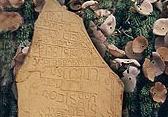Tombstone Route
Take the road to Carnarvon, and turn left along the Oest road. A form of folk-art as tombstones were skilfully chiselled out of local sandstone. The owner’s permission is required before visiting. Also see some special old tombstones at the Old Cemetery.
Blockhouse
2km west of the town. It dates from the time of the Anglo-Boer War.
Corbelled Houses
Regarded as the first architectural style in the north-west Karoo. Unique in that it is built entirely of stone, with flat stones protruding from a domed roof. Examples of these houses may be seen on the farm Arbeidersfontein, in the direction of Carnarvon, and along the Fraserburg road at Jan Klaasplaas and on Van Reenensplaas.
Museum
(NG Mission Church) 12 Lutz Street. The mission church was consecrated on 29 March 1884. The original church was a square building, with the vestry at the back and a bell outside. Later, two wings were added.
NG Church
The sandstone church, a national monument built in 1912/13, was a unique style at the time. The church cost £8.000 to build.
Rhenish Church
10 Church Street. This little mission church was consecrated in 1857 and the original woven reeds may still be seen under the present iron roof. When white farmers later moved in they had no church of their own so the mission congregation invited them to use their church. As far as is known, this was the only congregation in South Africa where people of all races served on the same church council, at the beginning of the 19th century.
Singing Hills
East of Williston stand two hills, each shaped like a sugar loaf. A footpath leads to the rope, known in the nineteenth century as ‘Sangkoppe’ but later as ‘Singkoppe’ (Singing Hills). From the hills choirs would sing spiritual songs that echoed all around.


